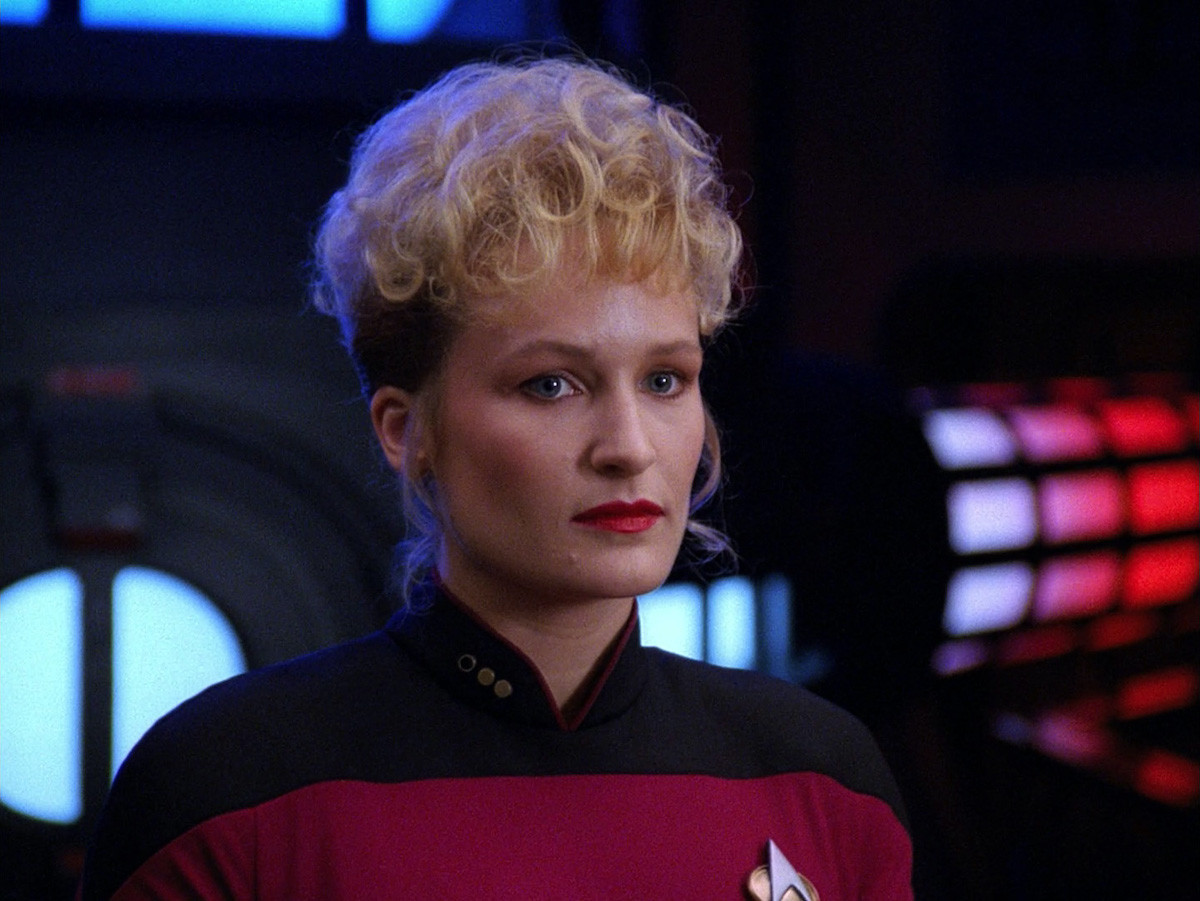“Last time on Star Trek: The Next Generation…”
Star Trek: The Next Generation is the series that taught me to pay attention to television writers. It’s how I learned about how a writers’ room works (and developed a lifelong ambition to work in one); how the production command structure on a series works; and what a showrunner is, from a time before (as I think the Season Three blu-ray supplements pointed out) the word “showrunner” even existed.
The showrunner on Next Gen through its entire heyday was Michael Piller, who reportedly wrote “The Best of Both Worlds” parts one and two all by himself, so clear was his vision of how to do it. He was the architect of the writing reboot that took Next Gen from a promising upstart to the landmark series as it is remembered today. He did this by rigidly formalizing the dramatic structure of every show that passed through his writers’ room. More importantly, he insisted that every episode be squarely focused on a principal character, rather than an idea, an allegory, a planet, or a guest star.
Ironically, “The Best of Both Worlds, Part II” succeeds by pretty much wholly ignoring the latter dictate. It’s ostensibly a Riker show, but really, “Best II” is about everyone — the whole crew of the Enterprise, and Locutus/Picard, and the Borg too. How Piller brought us back from that long, awful summer in 1990 with a concluding episode for Next Gen’s first cliffhanger that is, in every way, better than anyone could have expected remains well beyond me. Like “Yesterday’s Enterprise” and “All Good Things,” “The Best of Both Worlds, Part II” is an incredible piece of writing first and foremost — wrapping up the story and bringing the space battle excitement, of course, but finding so many beats and nuances, with opportunities for each of the principal characters, that it’s a wonder the show isn’t busting apart at the seams.
It’s silly to compare a Part I against a Part II, because they’re not designed to operate independently, but if I could only take one half of “The Best of Both Worlds” with me camping, it would be Part II by a mile. This is where all the mythic stuff happens: the Battle of Wolf 359, Riker becoming captain of the Enterprise, Commander Shelby advancing to XO, the separated saucer section battle, Worf and Data snatching Picard out of the belly of the Borg ship, and the Death Star-like destruction of the enemy at the episode’s tail end. Piller couldn’t have known it at the time, but he was authoring some of Star Trek’s most lasting images when he wrote this script.
Wolf 359, particularly, is one of the defining events of the franchise’s whole 24th-century era. In hindsight I can’t help but see the wreckage of the battle and think that Jennifer Sisko has just died, or that Picard will carry his psychic trauma from his transformation into Locutus for as long as we will know him. And give it up for the dramatic chances insisted upon by a limited television budget: by being forced to keep the battle at Wolf offscreen, the episode not only allows us to fill in the scale of the event in our imaginations, but allows for one of the most chilling moments in all of Star Trek history, when the Enterprise arrives too late, and drifts mutely through the starship graveyard.
It’s intensely fun (under the circumstances) to hang around with Captain Riker for an episode, especially given that we’ll never have the opportunity again, his promotion quietly swept under the rug by the time Picard is speaking normally again. Riker’s two-pronged assault on the Borg ship to retrieve Picard is probably the series’ single greatest set-piece. An earlier scene, in which Guinan plops herself down in Picard’s chair in the ready room and lectures Riker about letting the captain go, is a credit to both actors. The only real downside in “Part II” is that Riker’s contentious relationship with Commander Shelby seems to wrap up as soon as she is promoted to first officer. There was a lot more money on the table there, so to speak, and it’s disappointing that none of the setup from “Best I” – about age vs. experience, risk vs. strategy, or even men vs. women – gets paid off.
There’s one more ancillary downside to “The Best of Both Worlds, Part II.” When the Borg finally get theirs, and the Borg cube explodes in a dramatic fireworks show, we are unfortunately witnessing the end of the Borg as I know them and love them. Through “Q Who” and “The Best of Both Worlds,” the Borg are a terrifyingly unstoppable foe, designed to be so far beyond our technological reach that we might be more successful negotiating with a cloud of locusts descending on our crops than resisting the Borg. After “The Best of Both Worlds, Part II,” however, Star Trek no longer had any idea how to handle the Borg to both keep them effective, and keep them interesting. From here, we get endless Borg revisions in an attempt to solve at least one of those two problems: we meet Hugh the Borg, the feral Borg that Lore leads in “Descent,” and eventually, the gussied-up Borg 2.0 of Star Trek: First Contact and Seven of Nine on Star Trek: Voyager. But as villains, the Borg are never again as alien, or as frightening, or as cruelly, deliciously effective, as they were up till now. Resistance, as it turned out, was not futile – and the Borg began to wither away.

Blogging The Next Generation runs every Tuesday as I work my way through every episode of Star Trek: The Next Generation on blu-ray. Season Four is in stores now.
